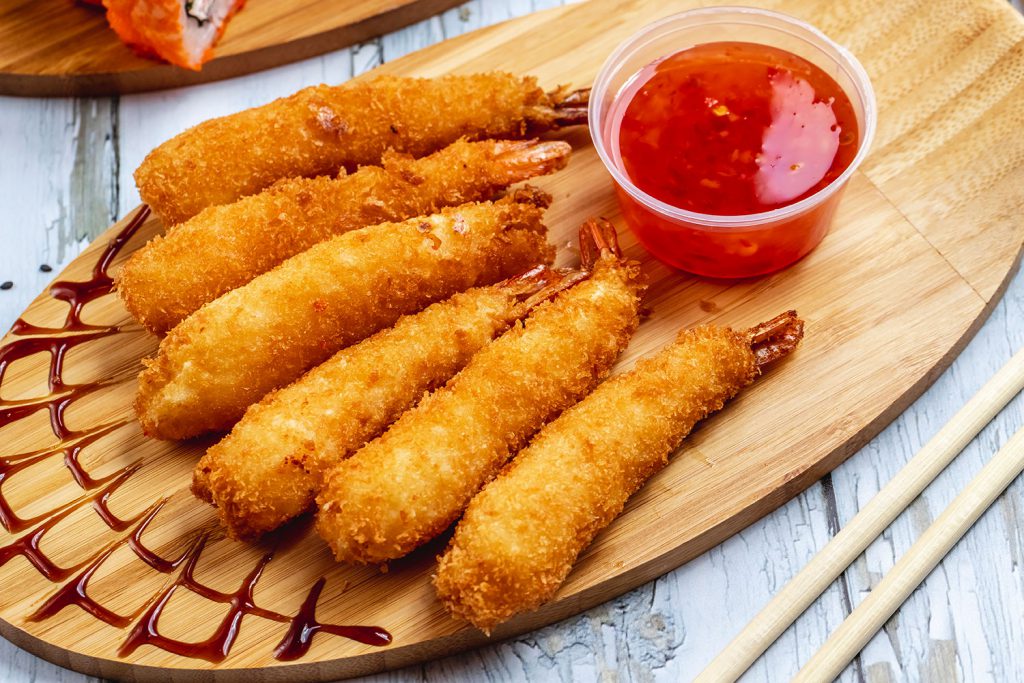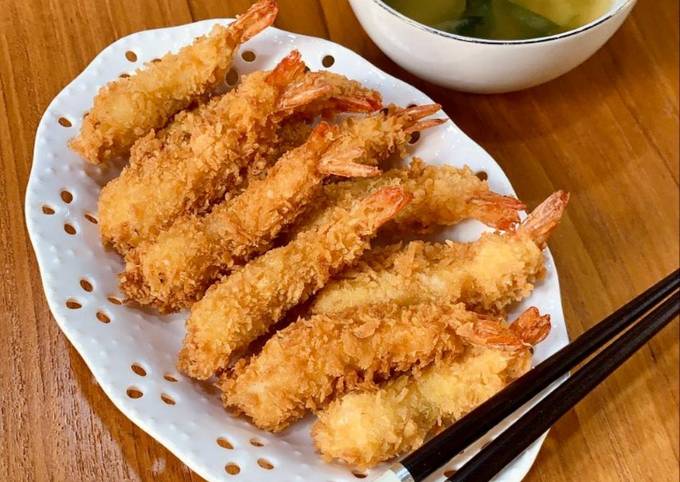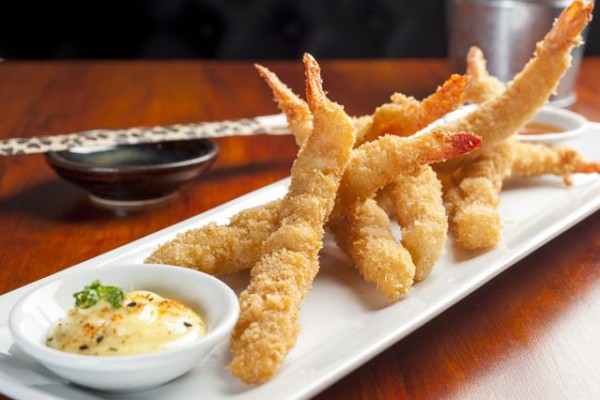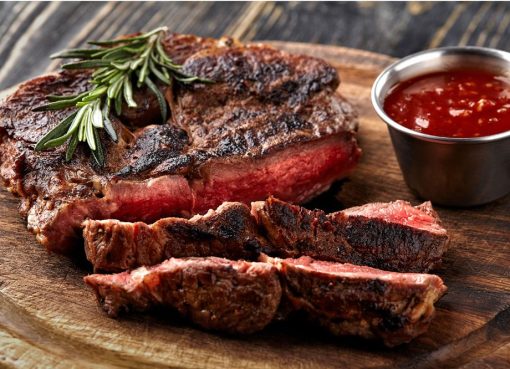Exploring Ebi Furai: A Delectable Japanese Delicacy 2024

Ebi Furai, a beloved Japanese dish, is a tantalizing delicacy that captivates food enthusiasts with its crispy exterior and succulent interior. Originating from Japan’s coastal regions, this delectable dish features breaded and deep-fried shrimp, creating a perfect harmony of flavors and textures. In this article, we will delve into the history, preparation, and cultural significance of Ebi Furai.

Origins of Ebi Furai
Ebi Furai, which translates to “deep-fried shrimp” in Japanese, traces its roots to the coastal regions of Japan, where seafood has always been a staple part of the diet. The dish is believed to have originated in Nagoya, a city renowned for its vibrant food culture and innovative culinary creations hometogel.
Preparation and Ingredients
To prepare Ebi Furai, fresh shrimp are cleaned, deveined, and seasoned with salt and pepper. The shrimp are then coated in a light batter, typically made from flour, egg, and breadcrumbs, before being deep-fried until golden brown and crispy. The result is a mouthwatering dish that combines the natural sweetness of the shrimp with the savory crunch of the breading.
Serving and Presentation
Ebi Furai is typically served as a main course or appetizer in Japanese cuisine. It is often accompanied by a dipping sauce, such as tonkatsu sauce or tartar sauce, as well as a garnish of lemon wedges or shredded cabbage. Some variations of Ebi Furai may also include a drizzle of mayonnaise or a sprinkle of sesame seeds for added flavor and texture.
Cultural Significance
Ebi Furai holds a special place in Japanese culinary culture and is enjoyed by people of all ages across the country. It is commonly served at izakayas (Japanese pubs), sushi restaurants, and casual dining establishments, where it is appreciated for its crispy exterior, tender interior, and umami-rich flavor.
Variations and Adaptations
While the traditional recipe for EbiFurai remains popular, there are many variations and adaptations of the dish that incorporate different ingredients and flavors. Some chefs may use alternative breading ingredients, such as panko breadcrumbs or crushed cornflakes, to create a lighter and crispier coating. Others may experiment with different seasonings and spices to add depth and complexity to the dish.
Conclusion
Ebi Furai is a beloved Japanese delicacy that embodies the essence of Japanese cuisine with its simple yet flavorful preparation and presentation. Whether enjoyed as a quick snack or a gourmet meal, EbiFurai delights the senses with its crispy texture, succulent shrimp, and irresistible taste. With its rich culinary heritage and universal appeal, Ebi Furai continues to captivate food enthusiasts around the world and remains a timeless classic in Japanese gastronomy.Exploring the Pros and Cons of EbiFurai: A Japanese Culinary Delight
Ebi Furai, a popular Japanese dish consisting of deep-fried breaded shrimp, has garnered acclaim worldwide for its crispy texture and savory flavor. However, like any culinary creation, Ebi Furai has its own set of advantages and disadvantages. In this article, we will delve into the pros and cons of Ebi Furai.

Pros of Ebi Furai
- Crispy Texture: One of the most appealing aspects of Ebi Furai is its crispy exterior, which provides a satisfying crunch with every bite. The golden-brown breading adds a delightful contrast to the tender and succulent shrimp inside.
- Versatility: Ebi Furai can be enjoyed in various settings and occasions, ranging from casual meals to special occasions. It serves as a versatile dish that can be served as an appetizer, main course, or even as part of a bento box or sushi platter.
- Rich Flavor: The deep-frying process locks in the natural juices of the shrimp, resulting in a flavorful and juicy interior. The combination of savory shrimp and crispy breading creates a harmonious blend of flavors that is both satisfying and delicious.
- Accessibility: EbiFurai is readily available in many Japanese restaurants and eateries around the world, making it easily accessible to food enthusiasts and seafood lovers alike. Its popularity ensures that it is often featured on menus alongside other Japanese delicacies.
Cons of Ebi Furai
- Caloric Content: Like most deep-fried foods, EbiFurai can be high in calories and fat due to the frying process and the use of breading. Consuming Ebi Furai regularly as part of a diet high in fried foods may contribute to weight gain and other health issues.
- Sodium Content: The breading used in EbiFurai often contains salt and other seasonings, which can contribute to its sodium content. Excessive consumption of sodium may lead to high blood pressure and other cardiovascular problems, particularly for individuals with preexisting health conditions.
- Allergen Concerns: Ebi Furai contains shrimp as its primary ingredient, making it unsuitable for individuals with shellfish allergies. Cross-contamination in kitchens where Ebi Furai is prepared alongside other seafood dishes may also pose a risk to individuals with severe allergies.
- Environmental Impact: The mass production of shrimp for dishes like EbiFurai may have environmental consequences, including habitat destruction, pollution, and overfishing. Sustainable sourcing and responsible consumption practices are essential to mitigate these impacts .
Conclusion
Ebi Furai offers a delightful combination of crispy texture, rich flavor, and versatility that has made it a beloved Japanese dish enjoyed by many around the world. However, it is important to be mindful of its caloric and sodium content, as well as potential allergen concerns and environmental impact. By enjoying EbiFurai in moderation and practicing responsible consumption, individuals can savor this delectable culinary delight while minimizing its drawbacks.

Unveiling the Origins of Ebi Furai: A Journey Through Japanese Culinary History
Ebi Furai, a beloved Japanese dish of deep-fried breaded shrimp, has captured the hearts and palates of food enthusiasts worldwide. However, the origins of this delectable delicacy are shrouded in the annals of Japanese culinary history. In this article, we embark on a journey to uncover the fascinating origins of EbiFurai.
Coastal Roots: The Birthplace of Ebi Furai
Ebi Furai traces its origins to the coastal regions of Japan, where seafood has always played a prominent role in the local diet. It is believed that fishermen in these regions developed the dish as a way to preserve and enhance the flavor of fresh-caught shrimp.
Early Techniques: The Evolution of Ebi Furai
The earliest versions of EbiFurai were likely simple preparations of shrimp seasoned with salt and spices before being coated in a light batter and deep-fried in oil. Over time, as culinary techniques evolved and regional influences came into play, variations of EbiFurai emerged with different breading ingredients and cooking methods.
Cultural Influences: Ebi Furai in Japanese Cuisine
EbiFurai popularity soared in the mid-20th century, thanks in part to the post-war economic boom in Japan and the rise of fast-food culture. It became a staple menu item in Japanese restaurants, izakayas (Japanese pubs), and street food stalls, where it was enjoyed by people of all ages.
Modern Adaptations: The Global Appeal of Ebi Furai
In recent years, Ebi Furai has gained popularity beyond Japan’s shores, becoming a favorite dish in Japanese restaurants and seafood establishments around the world. Chefs and home cooks alike have embraced the dish, putting their own spin on it with creative variations and innovative presentations.
Regional Variations: Ebi Furai Across Japan
While Ebi Furai is enjoyed throughout Japan, different regions have their own unique variations of the dish. In Nagoya, for example, a local specialty known as “Miso Katsu” features EbiFurai served with a savory miso-based sauce. In Osaka, EbiFurai is often served as part of a “kushikatsu” (deep-fried skewers) meal, accompanied by various dipping sauces.
Conclusion: A Culinary Legacy
Ebi Furai’s journey from its humble origins in Japan’s coastal villages to its status as a global culinary phenomenon is a testament to the enduring appeal of this beloved dish. Whether enjoyed as a simple street food snack or as part of an elegant dining experience, EbiFurai continues to captivate food enthusiasts with its crispy texture, succulent shrimp, and irresistible flavor.
Read More Article About “Ice-Free Arctic 2024: Navigating the Climate Crisis“



